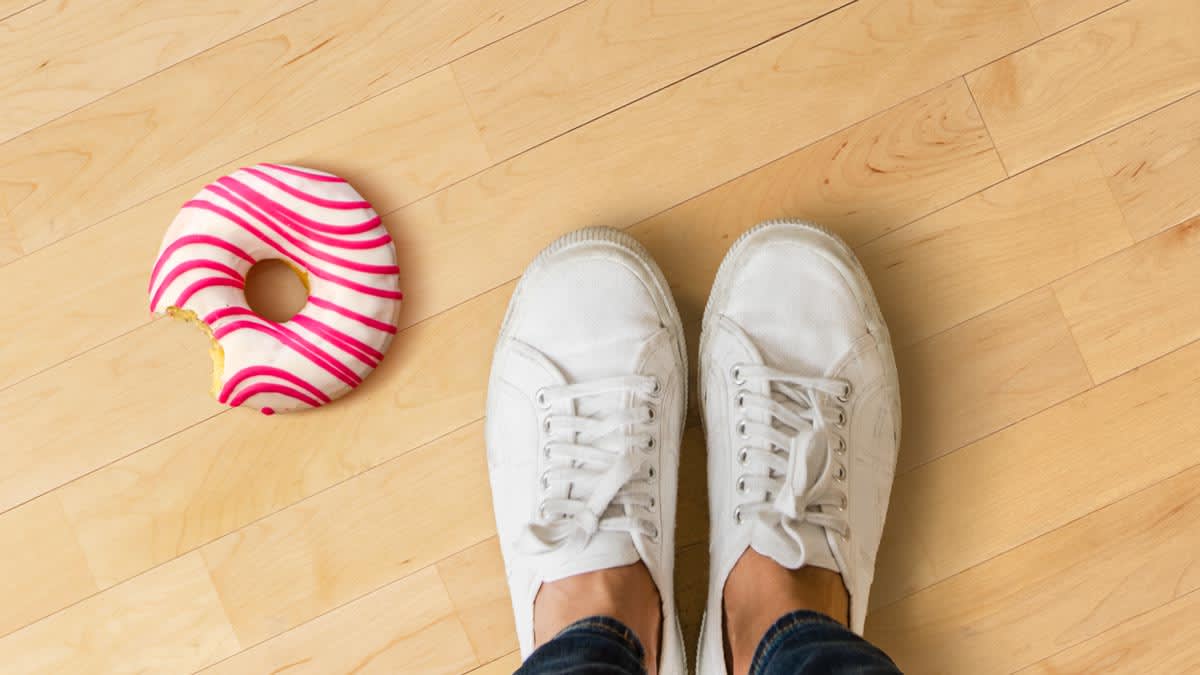I personally cannot fathom eating anything off the floor of a public space. For instance, would I ever eat a slice of pizza I had dropped on the streets of New York City, streets that, at one time or another, have been graced by the presence of dog feces, pigeon droppings, and trash cascading out of bins? No, because I have standards. They’re not high, but they’re there.
To me, Cheetos that have fallen onto my living room floor are more fair game, as is a blueberry I’ve just dropped on the kitchen floor. Both are surfaces that I consider to be fairly clean. And in case anyone around me is questioning whether that’s sanitary, I sometimes evoke the 5-second rule, though I’ve never really probed deeper into whether the rule is actually a scientifically proven one.
So is the 5-second rule legitimate or am I putting myself at risk? Here’s what some experts say.
The 5-second rule isn’t really valid. You shouldn’t be eating food that’s been on the floor even if it’s for less than 5 seconds, says James E. Rogers, PhD, the director of food safety research and testing at Consumer Reports, who says he would never eat anything off the floor nor would he let his children.
A 2016 study from Rutgers University in New Jersey found that the transfer of bacteria from a contaminated surface to a piece of food can happen almost instantaneously in some cases, thus disproving the 5-second rule.
The study also found that with some foods, the longer they sit on the surface, the more bacteria is transferred, says Donald W. Schaffner, PhD, one of the study’s authors. He’s an extension specialist in food science and a distinguished professor at Rutgers University.
There are, however, other factors that affect how much bacteria your food is going to pick up. For instance, bacteria transfers from a floor to wet food at a more rapid pace than dry food, so the risk from a piece of watermelon is quite different from a piece of toast or candy, Schaffner says.
The type of contaminated surface also matters. According to Schaffner’s study, as well as a 2006 study published in the Journal of Applied Microbiology, carpets transfer bacteria to foods at a lower rate compared with surfaces such as ceramic tiles.
What’s the risk of eating something off the floor? First of all, you can’t tell how much contamination is really on the floor, Rogers says. So even if your kitchen floor might appear to be very clean, its bacterial or viral hazards are invisible to the naked eye.
You’ve probably walked on sidewalks and other public places, and if you wear your shoes indoors, you’re transferring germs from the bottom of your shoes to places such as your kitchen floor, says Brian Sheldon, PhD, a food safety specialist and co-author of “Did You Just You Eat That?” It’s a book that explores common food myths, including the 5-second rule. (Probably another reason CR really encourages people to not wear their shoes indoors.)
So if your shoes transfer germs from outside to your floor or germs get there some other way, you could end up eating harmful bacteria and get sick. The risk is greater for more vulnerable populations, such as younger children, older adults, and people who are immunocompromised, says Sana Mujahid, a scientist who manages food safety research and testing at CR, including testing for pathogens in meats and produce.
It’s worth noting that the probability of you getting sick from dropped food is not super-high. But in the off chance that you do drop food where there are bacteria that will cause you severe illness, that bacteria is definitely going to get on your food, says Paul Dawson, PhD, a food scientist who wrote “Did You Just Eat That?” with Sheldon.
Are there any cases when you can pick something off the floor and it’ll be fine? If it’s a food that you can wash off, such as an apple, a plum, or blueberries, or food you can peel, such as potatoes and onions, you should be okay, Rogers says. Otherwise, it’s probably best not to risk it.
And if it’s food that will be cooked after falling on the floor, the risk is less compared with ready-to-eat foods that aren’t heated or cooked after you pick them off the floor, Sheldon says.
Ultimately, it’s good to exercise your common sense. Before you pick up something from the floor to eat, think about what type of floor it is, what might have been on it, and who’s going to be eating the food, Mujahid says.
-
-
-
-
-
-
-
-
